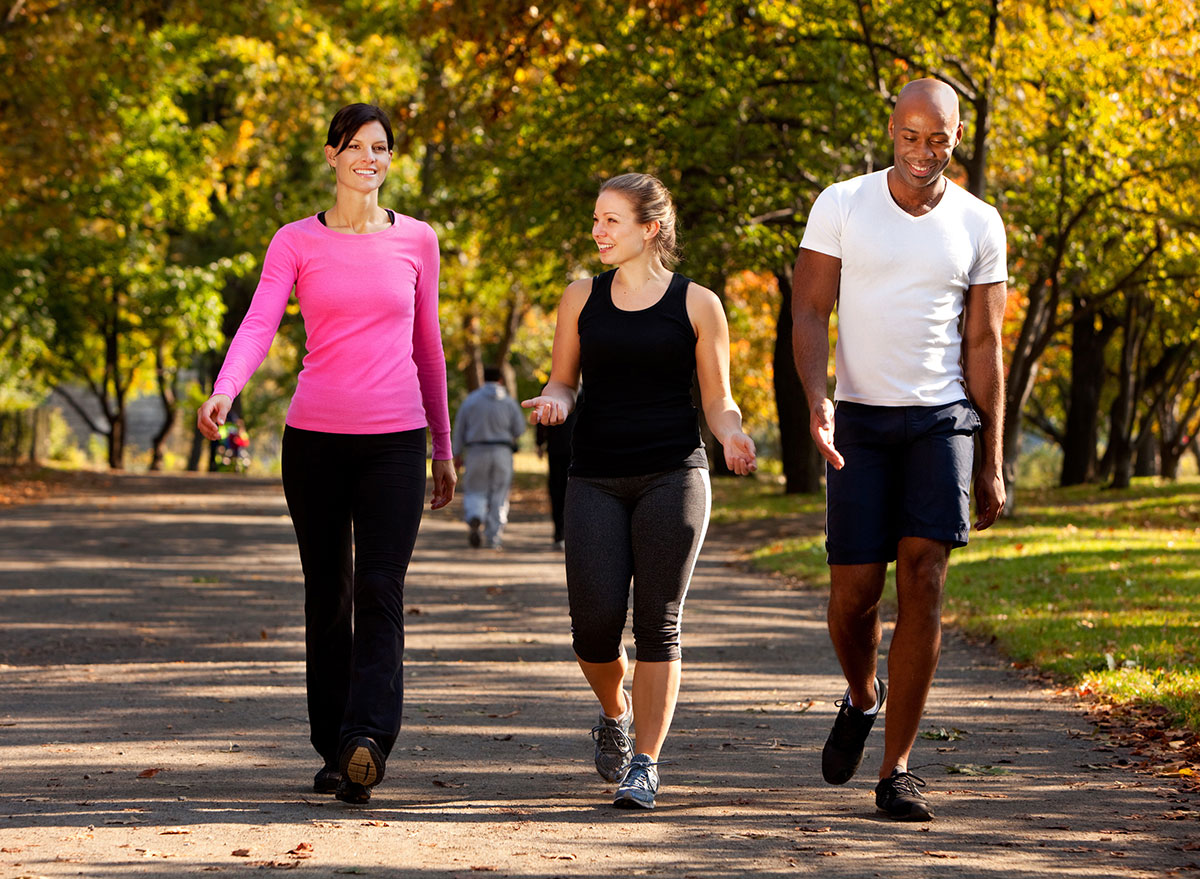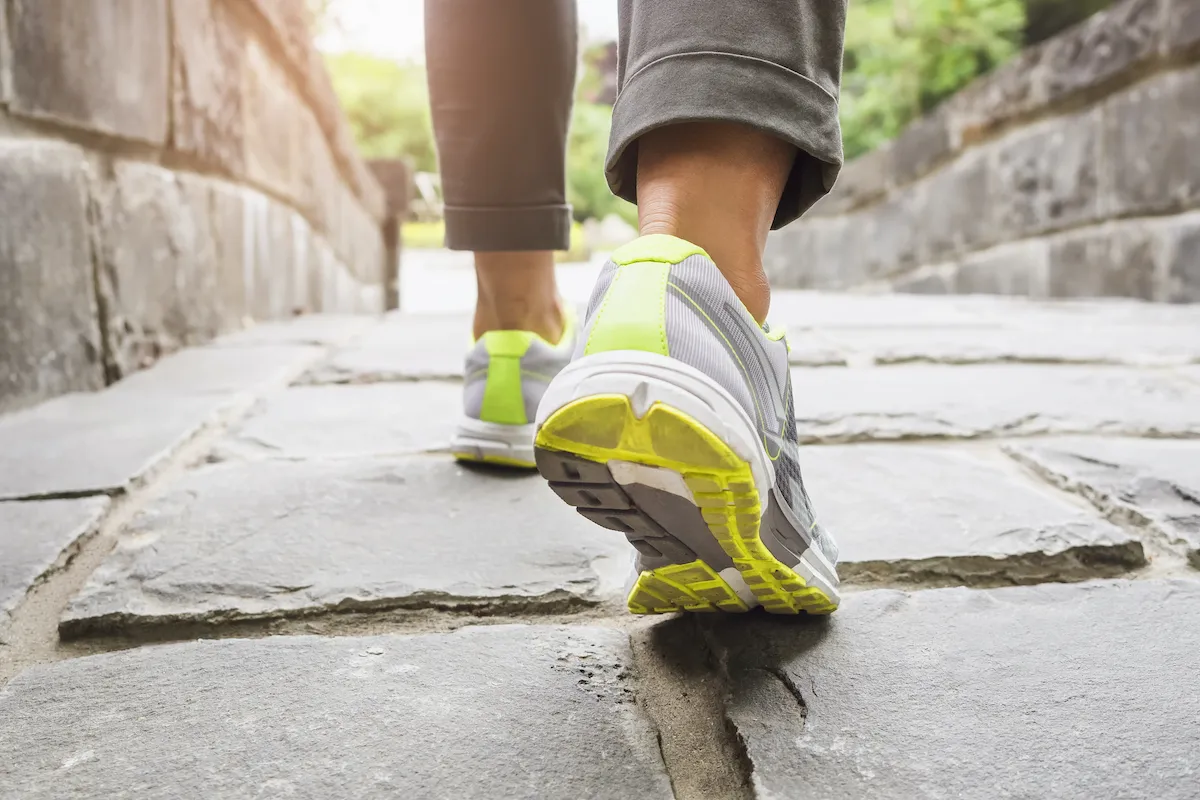New Study Reveals a Huge Side Effect of Walking More

If you’re a regular reader of ETNT Mind+Body, chances are you already know that walking more every day will help you burn more calories, bolster your heart health, and add years to your life. If you’re over the age of 50 or 60, you probably also know that walking more will enhance your basic physical fitness and your mobility. But science has shown that walking is also crucial for optimal brain health.
“Walking sends increased blood flow to the brain, which is linked to better cognitive function [and] protection against decline and improved memory,” Holly Schiff, Psy.D., licensed clinical psychologist based in New York and Connecticut, recently explained to ETNT. “Walking encourages our brain to release endorphins, a neurotransmitter that boosts our mental health.”
Now, a new study published in the scientific journal NeuroImage sheds fresh light on how walking is so effective at improving your cognitive function and your memory as you grow older. Read on for more about this amazing side effect of walking more. And if you love nothing more than to walk, don’t miss The Secret Cult Walking Shoe That Walkers Everywhere Are Totally Obsessed With.
White matter versus gray matter

Your brain is composed of gray matter, or tissue containing nerve cells, and white matter, which is the tissue that connects those nerve cells via nerve fibers. In the simplest possible terms, “the gray matter of our brain is the computer and the white matter is the cables that connect everything together and transmit signals,” writes VeryWellHealth.
For many years, gray matter had been prioritized by neuroscientists and studied far more than white matter. Much of that research helped scientists discover that gray matter isn’t static, or un-improvable after reaching adulthood. For instance, this study published in Neurobiology of Learning and Memory found that regular exercise among a group of older adults resulted in greater brain volume.
But, what impact does exercise have on white matter? Agnieszka Burzynska, PhD, a professor of neuroscience and human development at Colorado State University, and this latest study’s co-author, set out to answer that question.
White matter has “been like the ugly, neglected stepsister” of gray matter, Dr. Burzynska told the New York Times. She and her team hypothesized that white matter is just as responsive to exercise as gray matter before conducting their experiment. (For more intel on brain health, check out The One Exercise That’s Best for Beating Back Alzheimer’s, Says Doctor.)
Comparing exercises for brain health

To study this topic, a group of 250 older adults (ages 60+) were brought in to have their aerobic fitness levels and cognitive functioning tested. MRI brain scans were also used to establish baseline white matter readings. From there, everyone was separated into three experimental cohorts. Importantly, all participants were considered generally healthy, but led largely sedentary lifestyles.
The first, which served as a control, participated in a stretching and balance training program three times per week. The second group took up a regimen of brisk walking three times per week for 40 minutes at a time, and the third group took dancing lessons three times per week.
Once six months had passed, everyone returned to the research team’s lab for a series of follow-up assessments measuring cognition, memory, fitness, and white matter volume.
Walking wins

To even the research team’s surprise, the walking group showed the biggest improvements in both memory skills and white matter. Both walkers and dancers returned after six months in much better physical shape, and both groups showed white matter improvements. But it was the walkers who displayed the more prominent upticks in nerve fiber size and lesion healing (two indicators of white matter volume and health). Additionally, the walkers performed much better on memory tests than the dancers.
Conversely, adults in the control stretching group actually showed signs of white matter decline. Compared to their initial test scores, many performed worse after six months of only stretching with limited additional physical activity. Brain scans also revealed evidence of deteriorating white matter. This isn’t to say that stretching is bad, more that it does not seem to provide the cognitive health benefits that aerobic exercises do. (FYI, these are 5 Sure Signs You’ve Ruined Your Brain, Say Experts.)
A few walks per week improve memory

This study boasts more than one major takeaway. From a scientific standpoint, the collection of tangible evidence indicates that white matter is malleable and able to be improved late in adulthood. This finding is a major boon for our understanding of the human brain.
From a more practical perspective, study authors say their work suggests that all it takes is a few brisk walks per week to help keep your white matter healthy and your memory sharp.
As far as why walking is more beneficial than dancing: “The dancers spent some of their time each session watching the instructors and not moving much,” Dr. Burzynska theorized. “That probably affected their results.”
Consider this exciting study even more incentive to get up and go on a walk today. And for more ways to amp up your walk, check out the Secret Tricks for Walking for Exercise, According to Walking Specialists.








